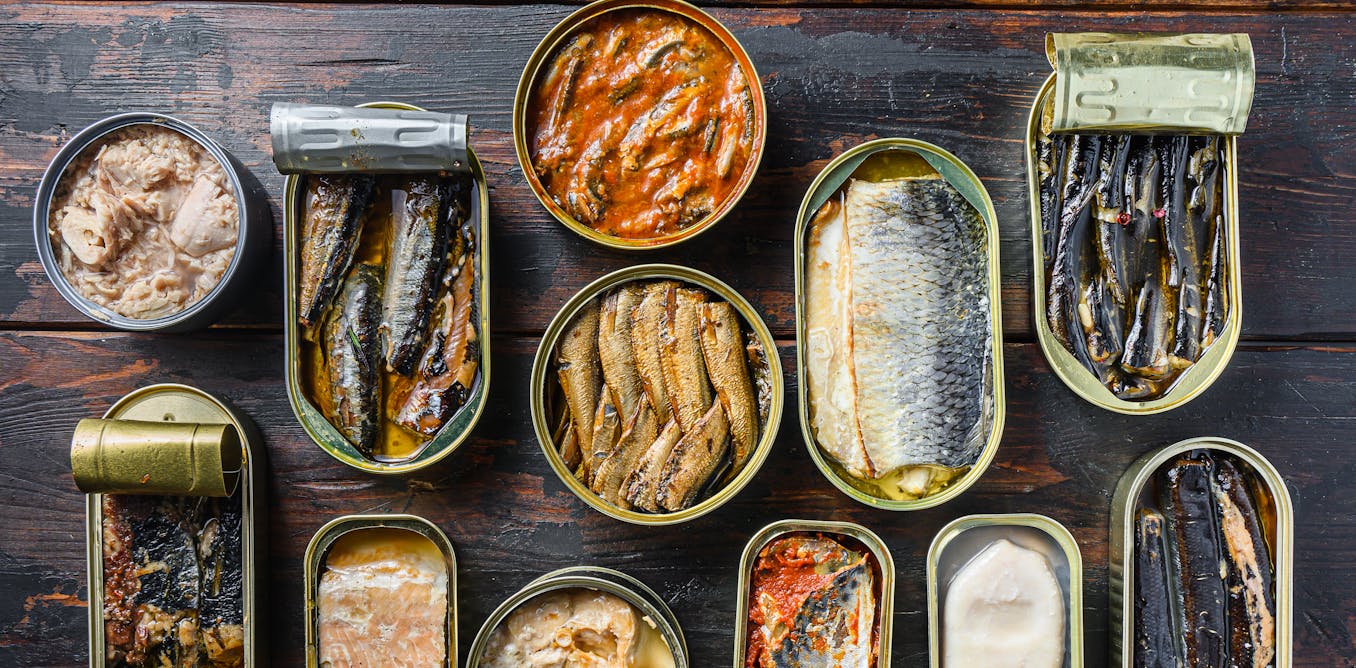A friend to the busy, tired and indisposed, a staple of university life, and the cornerstone of any survival kit or camping setup. We are talking, of course, about cans, a way to preserve various types of food and drink while also keeping their nutritients and flavour intact.
This method of preservation has been in our food system for decades, with one of its many virtues being that these metal containers can spend years in our pantries before going bad.
This has traditionally led people to see cans as a safe way of preserving food. However, to ensure their safety we need to more deeply understand the possible chemical interactions between containers and food.
Unless you notice damage or rust on canned goods, you can generally rest assured that what’s inside is safe. Many people steer clear of dented tins, and rightly so, as dents can cause small perforations that are not always visible to the naked eye. This can allow bacteria to get in, potentially contaminating the food inside.
However, food safety issues caused by the components of the tins themselves have often been overlooked, or at least not sufficiently addressed. This includes, for instance, potentially increased exposure to hazardous substances from dressing a salad with the oil from canned tuna.
But what substances are we talking about? And above all, what risks are we potentially exposing ourselves to?
Metal cans usually contain polymeric linings that act as a barrier between the food and the metal. This coating prevents corrosion of the can, and prevents alterations in the food’s flavour, texture or quality.
However, some of the tin’s components may still reach the food through a process called migration. This can affect the quality of the product and, in some cases, poses a potential risk to the consumer’s health, either by ingesting significant quantities, or through cumulative exposure over the course of their lifetime.
Endocrine disruptors in cans
In the FoodChemPack research group, at the University of Santiago de Compostela’s Faculty of Pharmacy, we study the coatings of metal cans, both for beverages and canned food. This work is done as part of several projects (MIGRAEXPO, MIGRACOATING, BACFood4Expo and ACHED), in collaboration with the Spanish Agency for Food Safety and Nutrition (AESAN).
In our work, we have detected many coatings that contained epoxy resins derived from bisphenol A diglycidyl ether (BADGE), which is synthesised from epichlorohydrin and bisphenol A (BPA), a known endocrine disruptor. These chemicals interfere with the hormonal system, contributing to the development of metabolic diseases such as diabetes or obesity, and can also, among other adverse effects, affect the reproductive system.
This hazardous compound was banned for use in baby bottles in 2011, and over many years European authorities reduced the maximum amount to which the general population should be exposed. Early this year, the European Commission completely banned the use of BPA and its derivatives in food contact materials.
Read more:
The EU has banned BPAs: here’s what you need to know about this common, toxic compound
Tuna: plain, in oil, or marinated?
In the beverages studied (alcoholic beverages, energy drinks, soft drinks and mineral water), the migration of these bisphenol A-derived compounds was found to be low. However, in canned foods, especially those with a high fat content, we observed higher levels of migration.
Concentrations of another compound called cyclo-di-BADGE were higher in cans of tuna containing tomato, marinade or oil than plain tuna. Unlike BPA this compound is not yet regulated, mainly due to a lack of toxicological information.
Based on this finding, we do not consider it good practice to reuse the liquids from cans – to dress pasta or salads, for instance – as this could increase exposure to these substances.
In addition, it has been observed that heating food directly in the can – something normally done in specific contexts such as camping – can increase the migration of these compounds. This is because heat accelerates the transfer of substances from the lining into the food, which can increase health risks.
How much do our bodies absorb?
In recent studies we have found that the bioaccessibility of these substances – meaning the amount that can be absorbed by the body – increases significantly when they are ingested with fatty foods.
To reach this conclusion, we simulated the way our digestive systems process these compounds. We used the in vitro gastrointestinal digestion protocol INFOGEST which, among other things, simulates the composition of saliva and gastrointestinal fluids, the duration of each phase, temperature and body pH values.
This showed us how different population groups are exposed differently to these substances, mainly depending on the basal pH of the stomach. This is normally around 1.5 in adults, but less acidic in children and elderly people.
In most cases, the amounts detected were within the limits established by the European Commission. However, it is important to consider possible exposure through various routes and cumulative exposure over a lifetime. After all, a person may be in contact with the same substance through different means – not only through water or food, but also through other routes such as respiratory or absorption through the skin. This can increase the total exposure to the substance in the body.
Even at low levels, exposure over prolonged periods can have negative effects, especially among the most vulnerable.
These current findings, as well as those yet to come, will allow people to make informed decisions and take precautions. This applies both to how we use of this type of packaging, for instance not heating cans directly over fire when camping, and how we consume the contents, such as not using oil from tins to dress salads. These relatively small steps can contribute to a safer, healthier diet in the long run.



